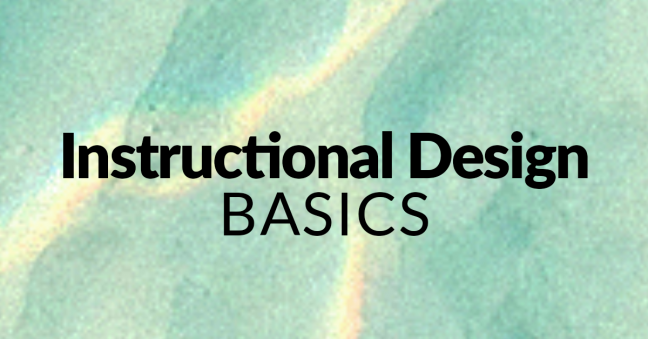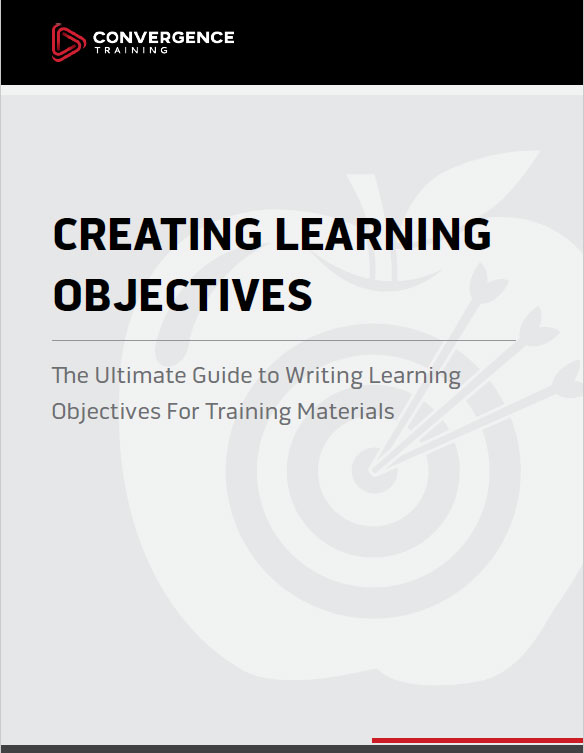
Have you heard the Miles Davis song “Seven Steps to Heaven?”
Well, this post isn’t about that song. Although it’s a great tune, to be sure. You’ve got to love that bass playing by Ron Carter and you can tell that this band was on its way to being Miles’ next great quintet.
Why mention the song, then? To make a comparison between the song title and the real topic of this post, of course. The title of Davis’ tune alludes to two things. The first is a sequential, orderly process—the seven steps. And the second is the desired end place—heaven.
There’s something similar in instruction (or training), too. It’s called the Nine Events of Instruction, and it’s based on a theory by instructional designer Robert Gagne.
Just like the Davis song title, Gagne’s theory also suggests a sequential, orderly process–the nine steps. And it leads to a desired end place–effective instruction/training. If you’re in the world of instructional design, training, or human performance improvement, effective training is the desired end place you’re interested in. So we don’t have to tell you why you’d want to know what those nine events are.
- Learning Management Systems
- Online Workforce Training Courses
- Custom Workforce Training
- Incident Management Software
- Mobile Training Apps
So what are these nine events of instruction, you ask?
In his seminal theory, Gagne laid out nine basic stages or events of instruction. They are:
- Gain learner’s attention
- Inform learner of the objective
- Stimulate learner to recall prior related knowledge
- Present material to learner
- Provide learning guidance to learner
- Elicit performance from learner
- Provide feedback to learner
- Assess performance of learner
- Enhance learner’s retention and transference of knowledge
Got all that? Or maybe some further explanation would help?
OK, let’s look at each event in a little more detail (future blog posts will look at each in much more detail, but let’s not put the cart before the horse).
Step 1: Gain the learner’s attention
We don’t just mean getting up in front of a class and shaking your arms and legs here. Instead, get your learners to focus their attention on the topic they’ll be learning. For example, if you’re going to teach procedures for entering a confined space, you might want to begin by playing this Chemical Safety Board video about a real-life tragedy involving a confined space. Basically, this is the “what’s in it for me?” principle (WIIFM?) and is a key part of adult learning principles. People won’t learn if they don’t see the point, so get their buy-in at the beginning.
Step 2: Inform the learner of the objective
Next, tell the learners what the objective of the training is. What should they be able to do when the training is complete? This will give them a way to focus their efforts and attention during the learning event.
Here’s a nice free guide about writing learning objectives.
Step 3: Stimulate the learner to recall previous knowledge
We learn best if we can put new information into context of related information that we already know. To help your learners recall prior knowledge, ask them what they know about the subject already, or have them write down what they know, or have them draw a “concept map” that shows the information graphically. Here are some good tips for stimulating learners to recall prior knowledge.
Stimulating prior knowledge helps learners call up “schemas,” or packets of related information. Then, during the learning event, they’ll have to modify those schemas to integrate the new information. That’s one reason why learning professionals such as Arun Pradhan, who write on learning how to learn, focus so strongly on schemas and the process of continually un-learning and then re-learning.
Step 4: Present the material to the learner
Now it’s time for you to present the material to the learner. Remember to present only material that supports your learning objective. “Chunk” the material into small pieces that logically build on one another, use active training methods, and incorporate blended training approaches when possible.
Here’s a nice article about “chunking,” here’s some information about active adult learning principles, and here’s some information on blended learning (and another on blended learning).
Step 5: Provide learning guidance to the learner
This is different than presenting the material (you just did that above, remember). What we mean here is to do things that will help your learners understand, remember, and later apply that information. This might include giving examples, making analogies, providing helpful mnemonic devices, using visual materials to support verbal explanations, providing hands-on exercises, having them work through a case study, and more.
Here’s a good article on analogies and another on visuals in training.
Dr. Will Thalheimer makes a good point that training professionals have three main jobs: helping workers comprehend new information and/or skills, supporting memory of that newly learned knowledge and/or skill, and helping workers apply that new information on the job. His lists of the “decisive dozen” and “learning maximizers” includes points about providing learning guidance.
Step 6: Elicit performance from the learner
Remember, people learn best when they do things. So the next step is to let the learners get some practice.
Step 7: Provide feedback to the learner
Provide specific feedback to the learner’s questions and to their performance. Don’t just tell them they’re doing something right or wrong—tell they why they’re right or why they’re wrong. Provide reinforcement for all key points. Remember, it’s important to always be encouraging while providing feedback.
There is a great deal of evidence that providing feedback to learners during a learning event is effective at enabling learning.
Step 8: Assess performance of the learner
Give your learners a test, or have them perform a task, to demonstrate their knowledge, skill, or ability. See if they did it right; work with them until they do.
Here’s an article on post-training assessments, including some concepts relevant to “tests” and “performance-based assessments.”
Step 9: Enhance the learner’s retention and transfer of knowledge
Your goal in this step is to help the learner save the new learning in their long-term memory and later be able to retrieve and apply it when relevant. One good way to do this is to provide frequent opportunities to practice after the training is complete. This is the “use it or lose it” rule. Another way is to put them in a situation that would allow them to use the new learning in a new context. This is what instructional designers call transferring.
For more on supporting retention, check out our articles on the forgetting curve and spaced practice.
For even more, let us refer you once again to Dr. Will Thalheimer’s “decisive dozen” and “learning maximizers” lists.
Conclusion: Gagne’s Nine Events of Instruction
So, that’s it. Nine easy steps to improve the quality of your instruction (and the quality of learning by those you’re instructing).
In the meantime, here are two good posts to help you consider the steps we just described in a slightly different way. If you noticed, Gagne’s steps are primarily focused on the instructor. But you may already know that the best learning is focused on the learner’s needs—that’s what we call being learner-centric. This slideshow and this blog post both provide good information about putting these nine steps into a more learner-centric model.
Or, if you’d just like to read someone else explain the Nine Events, we recommend Robert Gagne’s Nine Steps of Instructions and Gagne’s Nine Levels of Learning.
And finally, if you want to see a different “events of instruction” method, check out our article about the book Writing Training Materials that Work: How to Train Anyone to Do Anything by Foshay, Silber, and Stelnicki.
What about you? What are your own thoughts on this? What steps of training would you suggest?

How to Write Learning Objectives
All the basics about writing learning objectives for training materials.
passsmoLiked the term chunking to explain how to process and store detail by breaking into chunks.<br />Katherine<br />Naas
Thanks, Katherine.<br /><br />Can't take any credit for that–I've heard it used before. <br /><br />But I agree with you, I like it too.<br /><br />Have a great day!
I like Gagne's nine events. We do not have to use all nine events in each unit of instructions. But when I write/develop study guides for online learning, I make sure to "Elicit performance", provide feedback, and "Assess Learning".<br /><br />Providing guidance is a very important one.<br /><br />-Shumon
Shumon, we agree about the importance of guidance (without restriction).
Hi JEFFREY
Thanks for the “nine events of instruction”. This will help every trainer to do the best to ensure trainees receive the best and trainer to deliver the best.
Thanks a lot for sharing very valuable info.
Eagerly looking forward to hear more and eager to know if I could be of any help in anyway.
Thanks, Dinesh!